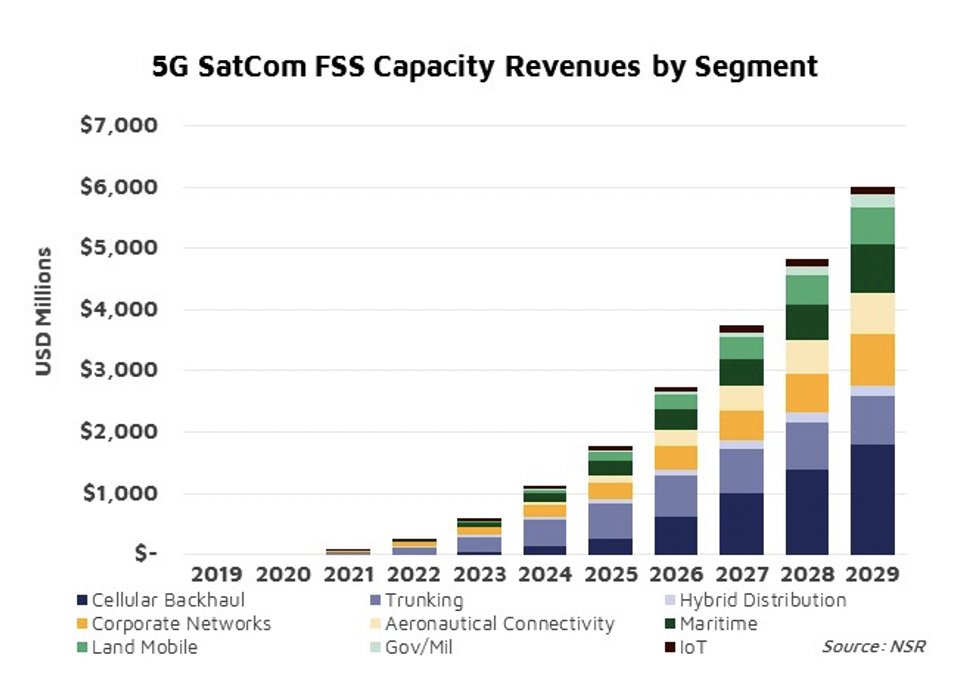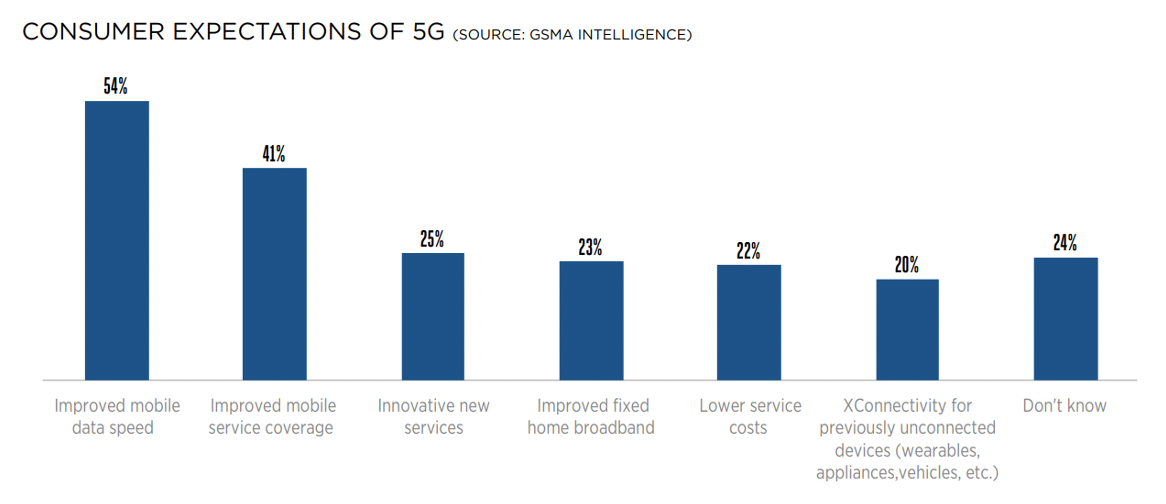Succeeding in the Satcom Transition to 5G
The wide Telecommunications industry is on the verge of a major transformation with the arrival of 5G. Satcom is no different and 5G represents an extraordinary window of opportunity for becoming a mainstream solution. How can Satcom maximize this opportunity?
With COVID-19 we might have lost sight of a big inflexion point in 2020: the materialization of 5G. One must not underestimate the potential of 5G as a catalyzer for growth. In fact, NSR’s 5G via Satellite: Impacts, Demand and Revenue Potential report forecasts that 1 in every 4 USD in FSS Satellite Capacity Revenues for Data verticals will be generated from 5G traffic by 2029.
How will 5G Remove Today’s Satcom Barriers?
Today, Satellite is a niche actor in the overall Telco ecosystem. For example, in segments like Cellular Backhaul, Satcom’s share of total sites is barely 1-2%. Satellite’s traditionally higher TCO (Total Cost of Ownership) has obviously been a big barrier for adoption, but even in today’s circumstances, with highly competitive offers thanks to the arrival of HTS and the evolution of Ground Segment, many MNOs are still reluctant to adopt Satcom due to its siloed technologies and processes.
Satellite requires very specific know-how and uses proprietary standards, making integration with mainstream network highly complex. 5G has the vision to become a ‘Network of Networks’ integrating multiple access technologies, including Satellite. 5G’s standardized service orchestration and the 5G NR extension for Non-Terrestrial Networks will make Satellite seamlessly integrable with the mainstream Telco ecosystem, dropping barriers for Satcom adoption.

Boosting Adoption
The Satellite IoT segment will undoubtedly witness significant benefits from 5G. In a segment where remotes often send just a few Kbs from time to time, bandwidth is not the main driver in the TCO. On the other hand, terminal cost can make or break the business case. Satellite today uses proprietary systems with limited scale driving terminal cost in the order of ~$100. However, adopting the 5G NR waveform would open access to mainstream chipsets and devices, dropping terminal cost to ~$10s. If that is not enough, instead of using specialized resellers, Satellite IoT would gain access to mainstream sales channels and a massive addressable market skyrocketing adoption for Satellite services.
MNOs have made it very clear that Enterprise Services are one of their key focus to drive 5G incremental revenues. 5G networking tools are very powerful allowing for network slicing to route traffic optimally depending on the application requirements. If Satellite is able to integrate in the 5G ecosystem, there will be numerous opportunities emerging from the unique set of attributes that a Satellite overlay can introduce to terrestrial networks (security, redundancy, broadcasting, etc.).

Interestingly, according to GSMA, Improved mobile data speed and Improved mobile service coverage are the two primary consumer expectations of 5G. These are obviously in line with what Satellite can offer to the 5G ecosystem, contributing to network densification and network extension into remote areas.
Optimizing the Backend Infrastructure
Satcom’s relation with 5G should be bidirectional. It is not only about how Satcom can serve 5G use cases, but also how Satcom can leverage 5G to optimize network design and operation. Virtualization and cloud are part of the definition of 5G Core. Unsurprisingly, operators like SES plan to adopt standardized orchestration, as it offers the capabilities, scale and flexibility to operate their future satellite networks minimizing investment and operating costs.
The versatility and robustness of the 5G Core is especially appreciated for extreme users, like in the Military space. Lockheed Martin, with its 5G.mil concept, plans to merge 5G and satellites to create an interoperable global communications network with 5G-capabilities in the digital battlefield.
Bottom Line
5G is a unique opportunity for Satellite to become a mainstream technology. But to realize this potential, the industry must ensure that it can meet 5G standards both at the network orchestration level and at the radio access level (for narrowband applications like IoT). This would drop historical barriers for Satcom such as integration complexities or high TCOs.
Network attributes highly valued by both Enterprise and customers match very well what Satellite can offer to the ecosystem (enhanced levels of security, coverage, etc.). Network attributes such as slicing or ubiquity ensure a prolific future for satellites in the 5G ecosystem.
NSR supports equipment vendors, service providers, satellite operators, end-users, public agencies and financial institutions in their technology and business strategy assessment and planning. Please contact info@nsr.com for more information.
